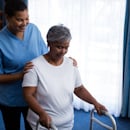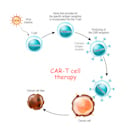
The RAPID Model-Prioritization
As we continue our series on Psychological First Aid (PFA), we reach the critical element of Assessment. To review the first two articles please click on the links below
Article 1: Overview of Critical Incident Stress Management (CISM) .
This article is the first in a six-part series that delves deeper into CISM, the RAPID model and Psychological First Aid.
Article 2: The RAPID Model- Rapport
Establishing The following rapport is an essential first part of any relationship; you are trying to build a trusting and helpful relationship with a person who may be experiencing the worst day of their life.
Article 3: The RAPID Model- Assessment
This assessment is derived from a guided conversation that is based on the survivor’s own narrative. It is punctuated with specific questions regarding the details of the event and the survivor’s reactions to the event. This is not a clinical assessment, instead, it is an assessment based on common sense allowing the survivor to tell you what happened and their reactions because of what has happened.
Psychological First Aid (PFA) is a compassionate and supportive presence designed to mitigate acute distress and assess the need for continued mental health care. PFA is not therapy, diagnosis, or treatment. John Hopkin’s program has developed an acronym, RAPID, to help guide you through PFA as well as self-care. RAPID:
Rapport/Reflective/Active Listening
Assessment
Prioritization
Intervention
Disposition
(Everly, McCabe, Semon, Thompson, & Jonathan, 2014)
As members of the healthcare profession, we know that the process of helping others, especially in times of pandemics, disasters (natural or manmade) take a toll on each of us. Using a standardized process to help others in psychological stress will help the person in need and using a self-care model will help ensure we have the stamina, psychological and physical stability to help those in need. This six-part series will discuss each segment of the acronym RAPID as well as self-care.
Part 3: Prioritization
After listening and assessing the situation, before implementing an assessment, it is important that we prioritize or triage the situation to help the survivors who need the greatest assistance.
Prioritization, in this instance, is defined as putting an emphasis on assisting basic functional capacity (Everly, McCabe, Semon, Thompson, & Jonathan, 2014).
The Keys to Triage are:
- Recognizing and prioritizing dysfunctional inclinations and behaviors. These behaviors may be acute and self-limiting or subacute and occur days, weeks, or even months later. Distinguishing among survivors at risk for psychological distress, disability, and impairment will inform your intervention.
- Determining if the survivor is dislocated from family and loved ones. Do these survivors have a place to stay, or have they lost their home?
- Was the survivor physically injured and requiring medical care, did they experience the feeling of floating out of their body (disassociation), or were they near the event?
(Everly, McCabe, Semon, Thompson, & Jonathan, 2014)
Prioritization cannot be accomplished without first actively listening to the survivor and adequately assessing the situation. This information informs the prioritization or triage process enabling you to get the greatest assistance for the greatest need.
In summary, remember no two people are ever alike and no two situations are ever alike. Even though two people may experience the same situation they may respond to the situation completely differently.
The next article in the series is Intervention. Each step of the acronym RAPID is essential so be sure to read each of the six articles.
References
Everly, G.S., McCabe, L.O., Semon, N.L., Thompson, C.B, Jonathan, L. (2014). The development of a model of psychological first aid for non–mental health trained public health personnel;
The Johns Hopkins RAPID-PFA.




